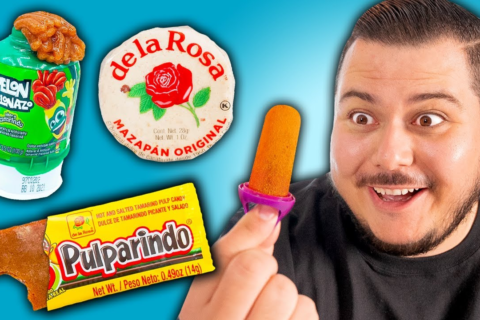Becomes bubbly as beer nyt: Beer, a beloved beverage worldwide, is known for its effervescent nature, often seen as a hallmark of a good pour. This characteristic bubbling, or foaming, is not just a visual delight but a crucial aspect of the beer-drinking experience. The crossword clue “becomes bubbly, as beer,” often translates to “foams,” capturing the essence of what makes beer so appealing. But what exactly causes this bubbly phenomenon? Let’s dive deep into the science and art of beer foam.
The Role of Carbonation in Beer
When beer becomes bubbly, it’s primarily due to the presence of dissolved carbon dioxide (CO2). During the fermentation process, yeast converts sugars into alcohol and CO2. The CO2 remains dissolved in the beer until the bottle or can is opened, at which point the pressure is released, allowing the gas to escape in the form of bubbles. This release of CO2 is what causes the beer to foam and create that frothy head that beer enthusiasts love.
Carbonation Process in Brewing
Brewers often add a small amount of sugar before sealing the beer, encouraging further CO2 production in the bottle, enhancing the carbonation. This process, known as bottle conditioning, contributes to the beer’s final effervescence, which is not just a sign of freshness but also a factor that influences the beer’s aroma and flavor.
Why Does Beer Foam? The Science Behind the Bubbles
Foaming in beer, often referred to in crossword puzzles as “becoming bubbly,” is more than just a visual spectacle. Foam formation is the result of CO2 bubbles rising to the surface. As these bubbles ascend, they carry with them proteins, hop acids, and other compounds that stabilize the foam. The foam head acts as a barrier, preventing the beer from quickly going flat and preserving its aroma.
The Influence of Ingredients on Foam Stability
Certain ingredients in beer, particularly proteins from malt and polyphenols from hops, play a significant role in foam stability. These components form a complex network that surrounds the CO2 bubbles, giving the foam its structure and longevity. Different types of beer will have varying foam stability based on their ingredients and brewing process.
Why Is Foam Important in Beer?
Foam isn’t just for show; it serves a practical purpose in beer tasting. A thick, stable foam head traps volatile compounds that contribute to the beer’s aroma. As the bubbles burst, they release these aromatic compounds, enhancing the sensory experience. Moreover, the texture of the foam can affect the mouthfeel, adding a creamy or smooth quality to the beer.(becomes bubbly as beer nyt)
Foam’s Role in Beer Presentation
From a cultural perspective, the amount of foam in a glass of beer can be indicative of quality and serving practices. In many European countries, for instance, a well-poured beer with a thick head is considered essential for appreciating the full flavor of the beverage. The foam also acts as a protective layer, keeping the beer underneath fresh and preventing oxidation.
Common Crossword Clues Related to Beer Foam
Crossword enthusiasts often encounter clues related to beer, and “becomes bubbly, as beer” is a classic example. The answer, “foams,” highlights the importance of foam in the context of beer. Other related crossword clues might include “beer head,” “effervescent,” or “carbonated.” These clues allude to the intricate relationship between beer’s carbonation and its overall quality.
Why “Foams” Is the Correct Crossword Answer
The word “foams” perfectly encapsulates the action of beer becoming bubbly. It’s a concise term that reflects both the process of carbonation and the visual result of a well-poured beer. For those solving crossword puzzles, recognizing this term is crucial for connecting the dots in beer-related clues.
Beer Styles and Their Foaming Characteristics
Not all beers foam equally. The style of beer significantly affects its foaming behavior. For example, wheat beers are known for their thick, creamy foam due to their high protein content. On the other hand, highly carbonated lagers may produce a less stable foam, quickly dissipating after pouring. Understanding these differences can enhance both your crossword-solving skills and your appreciation of beer.
How Beer Glassware Influences Foam
The type of glassware used can also impact the foam. Beer glasses are often designed to encourage foam formation and retention. A glass with a narrow mouth, for example, will concentrate the foam, while a wider glass may allow the bubbles to spread out and the foam to dissipate more quickly.
Tips for Maximizing Foam in Your Beer
If you want to experience the best of beer’s foamy goodness, there are several tips you can follow. First, always pour your beer at an angle to minimize agitation, which can cause excessive foaming. Secondly, using clean glassware is essential, as any residue can disrupt bubble formation. Finally, consider the temperature; pouring beer that is too cold can suppress carbonation, reducing the foam.
Pouring Techniques for Perfect Foam
To achieve the perfect foam, start by tilting the glass at a 45-degree angle and pour slowly down the side. As the glass fills, gradually straighten it to create a controlled foam head. This technique not only enhances the beer’s presentation but also ensures that the carbonation is properly released, contributing to the beer’s overall flavor profile.
Conclusion: Becomes bubbly as beer nyt
The bubbly nature of beer, encapsulated in crossword clues as “foams,” is more than just a characteristic of the beverage. It’s a vital part of the beer experience, influencing aroma, flavor, and presentation. Whether you’re solving a crossword puzzle or enjoying a pint, understanding the science behind beer foam can deepen your appreciation of this timeless drink. So next time you see a crossword clue related to beer, remember that the bubbles are more than just a clue—they’re a key to unlocking the perfect beer.
Also Read: White Tea Shot Explained: What You Need to Know
FAQs About Becomes Bubbly As Beer NYT
- What causes beer to foam excessively?
- Excessive foaming can be caused by factors like shaking the beer, using dirty glassware, or serving beer that is too warm. Ensuring proper pouring techniques and clean glasses can help manage foam levels.
- Does foam affect the taste of beer?
- Yes, foam affects both the taste and aroma of beer. A good foam head releases aromatic compounds that enhance the flavor profile of the beer.
- Why does beer foam disappear quickly?
- Foam can dissipate quickly if the beer is low in proteins or if the glassware has oils or detergents that disrupt bubble formation.
- Is beer foam a sign of quality?
- While foam alone isn’t a definitive sign of quality, a stable and creamy foam head often indicates a well-crafted beer with balanced ingredients.
- How can I reduce foam when pouring beer?
- To reduce foam, pour the beer slowly down the side of the glass at an angle and avoid agitating the bottle or can before opening.
- What type of beer has the most foam?
- Wheat beers typically have the most foam due to their higher protein content, which supports stable foam formation.












